

Useful Apps and Technology for the Classroom. When it comes to the classroom, technology is always moving forward!
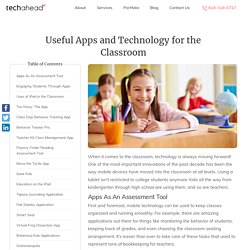
One of the most important innovations of the past decade has been the way mobile devices have moved into the classroom at all levels. Using a tablet isn't restricted to college students anymore: Kids all the way from kindergarten through high school are using them, and so are teachers. Apps As An Assessment Tool. GoNoodle. BrainPOP. Doceri - The Interactive Whiteboard for iPad. The Best Apps for Teachers and Educators. Consumer tech is taking over the classroom. Today, devices like the iPad are heavily marketed toward schoolteachers and optimized for classroom use. As more and more gadgets find their way into the classroom, so too will educational apps. Fortunately, apps and software hold the potential to inspire and educate in a fresh, exciting way. Whether you’re a student, parent, or educator, you can learn a thing or two from the incredible educational apps below.
Kahoot Teachers love to turn a boring lesson into a game to motivate their students, but not everyone has the skills to make a game from scratch. iOS Android. ClassDojo. Teacher Recommended: 50 Favorite Classroom Apps. Luhtala has also noticed some app fatigue among her colleagues.
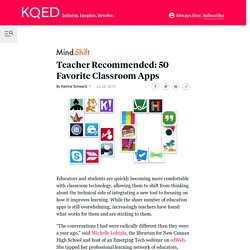
How to Manage Cell Phones in the Classroom. 10 Student-Tested Chrome Extensions. 10 Chrome Extensions That Students Will Really Use Google Dictionary (free): Sometimes articles in content area classes can be challenging, especially when students are faced with unknown words. While they could open a new tab and run a search for these words, this extension offers a much easier alternative that doesn’t disrupt a student’s workflow. The student can double-click on any word in a text to see a small pop-up window with a definition, and they can hear the pronunciation of the word. The student can also launch a complete Google search for the word from the pop-up—increasing their understanding by seeing the word in a variety of contexts.
How to Use Google Tools to Help Students Track Their Learning. 15 Characteristics of a 21st-Century Teacher. Recent technological advances have affected many areas of our lives, including the way we communicate, collaborate, learn, and, of course, teach.
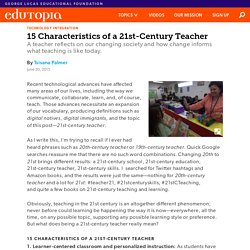
Those advances necessitate an expansion of our vocabulary, producing definitions such as digital natives, digital immigrants, and the topic of this post—21st-century teacher. As I write this, I’m trying to recall if I ever had heard phrases such as 20th-century teacher or 19th-century teacher. What Teachers in China Have Learned in the Past Month. Since February 17, I’ve been teaching 11th-grade humanities writing to students who are self-quarantined in China.
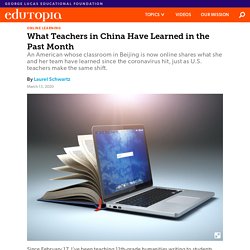
Our teachers were in the same position several weeks ago that U.S. teachers are in now—we were expecting to teach in classrooms in Beijing. Now we’re teaching virtual classes remotely from our homes in China and countries around the world. A 5-Step Guide to Making Your Own Instructional Videos to Replace Lectures. 10 Reasons Today’s Students NEED Technology in the Classroom.
Technology is everywhere--entwined in almost every part of our culture.
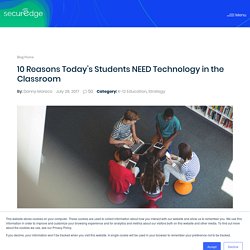
It affects how we live, work, play, and most importantly learn. With mobile and other wireless devices like the IoT becoming an increasing requirement across every industry today, it only makes sense that our schools are also effectively deploying mobile technology in the classroom. 5 Fun Online Games that Disguise Important Lessons. Powerful Plants – Watch. Learn. Grow. Tiggly Chef Addition: Preschool Math Cooking Game on the App Store. This is a math learning app, which will help your child learn addition, and represent addition problems with drawings, verbal explanation, and math equations - while helping Chef prepare his signature Spicy Hula Monkey Cake, and over 40 other outrageous dishes.
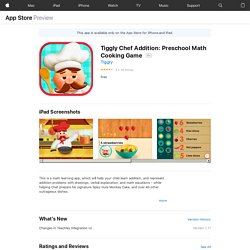
***Tillywig Brain Child 2014 Award Winning App*** Tiggly Town’s greatest, most mustachioed Chef tells you what he needs to prepare his preposterously silly recipes, and you help by adding the exact number of ingredients Chef asks for to get the recipe right. You can even suggest your own recipes to Chef. While ingredients are added, mathematics symbols appear on screen explaining your actions, helping you naturally learn numbers and early addition concepts; surely Chef will encourage you to follow instructions and think flexibly! Tech Toys (and Tools) for Learning. A whole new trend is about to explode in the educational app world.

You may be familiar with the new tech that allows for apps to interact with tangible objects. This enhanced interactive technology is undoubtedly one that will change educational apps as we know them. Soon, the pairing of augmented reality with extensive curriculum guides will be commonplace in the classroom. Indie developers are producing a wide range of products that focus on spatial awareness, language development, number sense, problem solving, and motor skills, as well as an introduction to literacy, math, and the sciences. Tech-Based Formative Assessment. How do you check for understanding in your classroom?
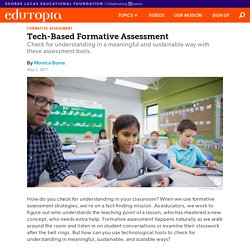
Student Engagement Platform- Nearpod. Tech Buddies: Building Technology Skills Through Peer Teaching. Childcare Daily Sheets done Paperless. 10 Examples of Modern Classroom Technology. The technology industry has progressed exponentially over the last few decades and has been adding tools to help teachers reach their students.
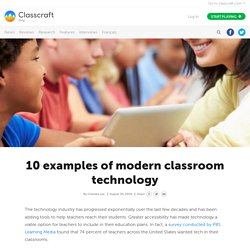
Greater accessibility has made technology a viable option for teachers to include in their education plans. In fact, a survey conducted by PBS Learning Media found that 74 percent of teachers across the United States wanted tech in their classrooms. Educators have said the benefits that come with having and using technology in schools includes expanding on and reinforcing lesson content and motivating students to learn. It also gives teachers the option to reach students with different learning styles.